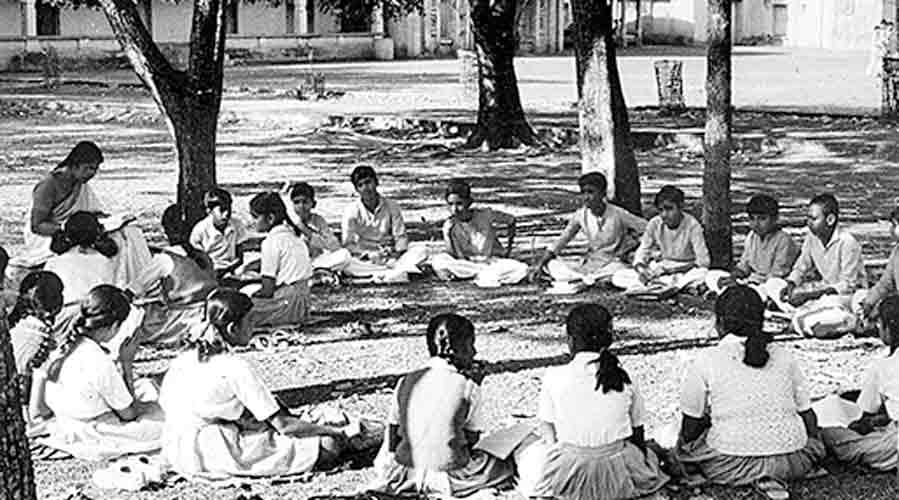A little over one hundred years ago, on December 23, 1921, in the early hours of the morning, the Visva-Bharati Parishad Sabha was officially established by Rabindranath Tagore in the vicinity of Amrakunja. Although by some accounts, the work of Visva-Bharati’s foundation had begun three years earlier, it was in December 1921 that Tagore formally announced, “Today is the first session of the Visva-Bharati Parishad. I formally hand over the University to all likeminded individuals within and outside India who care for its welfare and nurture belief in its ideal, to them I submit this institution.” (Author’s translation.)
With this larger aesthetic view, Tagore gave birth to Visva-Bharati, a Global India — uniting India and the world — in an age when globalism was not yet a catchword as it is the case today.
Tagore records the following on a journey while visiting Japan: “I looked at the land; it was so different to my eyes, so picturesque. [A] Japanese passenger came on the deck and stood by the railing. He did not see only a picturesque land; he saw a land whose woods and rivers and hills had been given a new form by contact with the minds of his countrymen, not a material but a human form... As a man’s native land is not only natural but human — that is why it is a source of such joy to him...” (“The Aesthetic Philosophy of Tagore” by Abu Sayeed Ayyub.)
The central doctrine of Tagore’s aesthetic philosophy — it informed the vision for Visva-Bharati — lies rooted in human emotions, which act as a bridge between the individual and the world. Our emotions transmute the material world around us, thereby becoming a source of joy. For Tagore, art has no utilitarian significance. Art arises when the desire to express one’s emotions makes the artist want to forget the material world. Here, Tagore’s vision reflects the philosophy of John Keats’s “Beauty is truth, truth beauty.”
One may argue that emotions can also be negative. True, they may arouse horror and repulsion. While watching Shakespeare’s play, King Lear, one experiences revulsion at the ingratitude of his two daughters (“How sharper than a serpent’s tooth it is to have a thankless child!”); there is pain, there is pathos, when King Lear roams in the sharp cold winds in the wild like a madman. But the play reveals a universal understanding of man’s place and, in this moment of oneness, offers the joy of comprehension.
Contrary to popular perceptions, emotions in Tagore’s view are not subjective. Much like science, they retain a degree of objectivity that cuts through materiality to reveal a subterranean, universal oneness.
If emotions constitute the medium through which we are made aware of objective reality, then Tagore certainly viewed aesthetic emotions as a form of knowledge. Rather than external observation, it is knowledge derived through experiential awareness which deepens our understanding of the real. The poet does not share the sharp modern division between subjective and objective states whereby emotions are perceived to be a purely subjective entity without any reference to the external. “Everything around is real, yet we do not see reality in its immediacy, in its purity. It is only in artistic creation that reality comes before our consciousness unveiled, and we see it face to face.” (Ayyub’s translation.)
The artist, therefore, creates not an individual work marking his singular point of view but, rather, a representation of the real — whole and universal.











